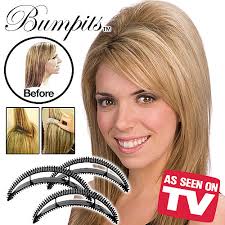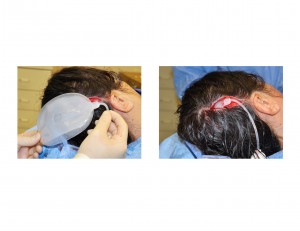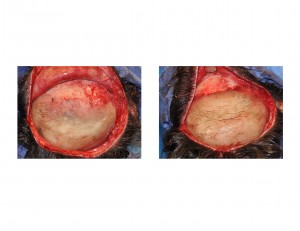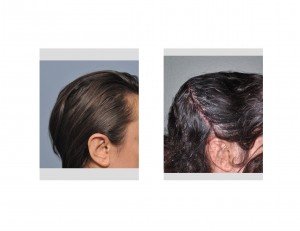Background: While there are many different cosmetic skull shape deformities, one of the most common is that of a flat back of the head. The slope of the back of head can be flat either in a completely vertical plane (lack of posterior projection) but most commonly is more of an exaggerated slope from the top of the vertex to the back. (lack of posterosuperior projection) These are the result of deformational skull forces either during utero or early after birth due to positioning.

The skull can be built up by bone cements anywhere on its bony surface. This is a common surgical method for a variety of skull deformities. But the amount of skull augmentation that can be achieved is limited by how much the overlying scalp can stretch. It is important in any expansile cranioplasty to have a scalp closure over the material that is not unduly tense (too tight) to avoid potential wound problems after surgery. For most patients this amounts to about 60 grams of bone cement and not usually much more than that can be safely applied.
To overcome the concerns about scalp expansion during a cranioplasty or for the patient who wants the maximum amount of skull augmentation, a two-stage cranioplasty needs to be performed. In the first stage, a tissue expander is placed into the scalp and then expanded by saline injections into it every few days. Expansions on done for 4 to 6 weeks after placement based on how much scalp stretch is needed. At the second stage, the tissue expander is removed and up to 120 to 150 grams of bone cement can be placed with an assured tension-free closure.
Case Study: This 26 year-old female was bothered by the lack of height in the back of her head. She usually wore her hair up to hide the flatness. She was very motivated to gain skull height and did not feel that what could be opened in a single-stage cranioplasty would be adequate. She wanted the maximal height obtainable like an internal ‘bumpit’.



A two-stage skull augmentation can be completed over a six-week time period and can usually double the amount of cranioplasty material that can be safely appled.
Case Highlights:
1) A flat sloping back of the head is a common cosmetic skull deformity. Many people style their hair to either hide it or make the back of the head look bigger.
2) An augmentative onlay cranioplasty can be done to build up the back of the skull but the amount of augmentation is limited by the stretch of the overlying scalp.
3) To achieve maximal skull augmentation, a two-stage skull augmentation can be done by a first-stage scalp tissue expansion.
Dr. Barry Eppley
Indianapolis, Indiana


